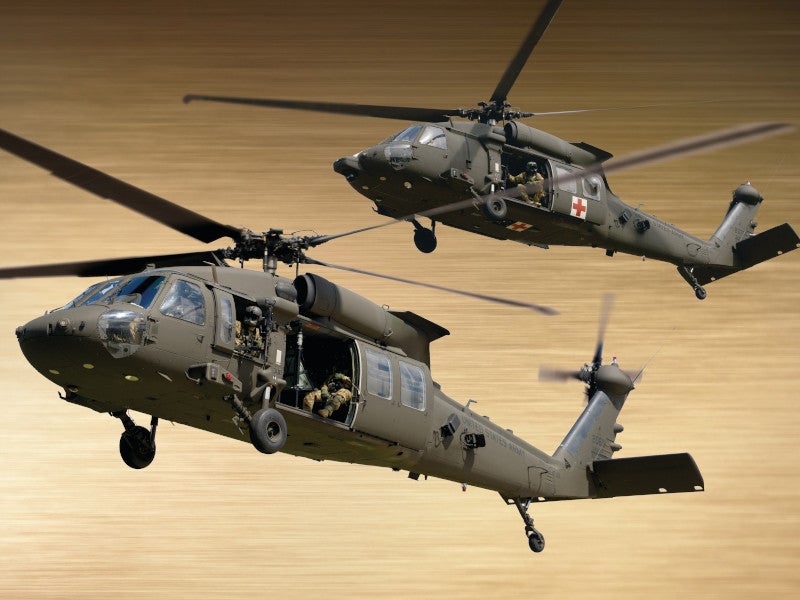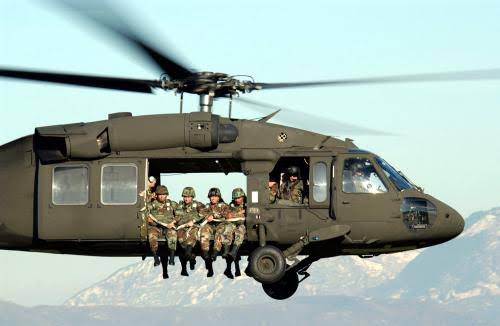Maintenance and Upkeep for UH 60 Helicopters
Maintenance and Upkeep for UH 60 Helicopters
Blog Article
A Comprehensive Overview to the Upkeep and Treatment of Airplane for Long Life
The longevity of an airplane pivots substantially on its upkeep and treatment, requiring a structured method to ensure optimum performance and safety and security. Comprehending the details of these methods can be intricate; therefore, it is crucial to discover the crucial aspects that contribute to reliable airplane care and the ramifications of disregarding these responsibilities.
Value of Regular Maintenance
Normal maintenance is vital for the safety and security, efficiency, and durability of airplane. A methodical method to maintenance makes certain that all elements function ideally, thereby lowering the danger of mechanical failure throughout operation. Normal inspections and maintenance allow professionals to recognize prospective issues before they intensify into considerable troubles, making certain that the airplane stays in compliance with aviation guidelines.
Furthermore, maintaining an airplane according to the producer's standards is critical for preserving its worth. A well-documented maintenance background can improve resale leads and instill self-confidence in possible customers. In addition, routine maintenance adds to operational effectiveness, as it assists to optimize fuel intake and performance metrics, resulting in cost savings gradually.
Furthermore, routine upkeep adds to the total security of trip procedures (uh 60). By addressing deterioration immediately, operators can minimize threats related to aging aircraft systems. This aggressive technique not only safeguards the lives of passengers and team however likewise safeguards the aircraft itself against disastrous failings

Daily Inspection List
How can pilots and maintenance crews make certain the aircraft is in ideal condition before each flight? The response depends on an extensive everyday assessment list, which offers as a crucial procedure to recognize prospective concerns that can endanger safety and security and efficiency. This list should include numerous vital areas, consisting of outside and indoor evaluations, as well as practical checks of vital systems.
Beginning with the exterior, teams ought to evaluate the airframe for any noticeable damages, leakages, or signs of rust. Interest should be paid to control surface areas, touchdown equipment, and the problem of tires. Relocating to the interior, the crew needs to validate that all tools and controls are functional, ensuring that digital systems are operating properly.

Along with structural checks, it is crucial to examine gas degrees and verify that all called for documents, including registration and weight and equilibrium details, depend on date. Lastly, a testimonial of emergency equipment, consisting of life vests and fire extinguishers, should be performed to make sure compliance with safety regulations. By diligently following this everyday inspection checklist, pilots and upkeep teams can considerably enhance the security and integrity of their aircraft.
Scheduled Upkeep Programs
Set up maintenance programs are necessary for the lasting safety and performance of airplane operations. These programs are made to make certain that all airplane elements go through routine examinations, upkeep, and essential fixings at fixed periods. By sticking to an organized maintenance timetable, drivers can substantially decrease the risk of in-flight failures, improve aircraft dependability, and expand the life expectancy of vital components.
Typically, set up upkeep is classified right into numerous degrees, consisting of A, D, b, and c checks, each with distinctive requirements and thoroughness. A checks are usually more regular and concentrate on basic visual examinations and small repairs, while D checks are a lot more detailed and happen much less often, entailing extensive disassembly and overhaul of the aircraft.
Regulative bodies, such as the FAA and EASA, mandate compliance with particular maintenance timetables based on aircraft type and usage. Operators needs to keep thorough documents of all upkeep done to demonstrate conformity and facilitate assessments. Furthermore, the assimilation of anticipating upkeep innovations can further enhance the efficiency of scheduled programs by determining potential concerns before they intensify, thereby making sure that airplane remain in ideal condition and all set for safe operations.
Take Care Of Airplane Interiors
Looking after airplane insides is crucial not just for traveler convenience yet likewise for keeping the overall value and security of Learn More the airplane. Routine check my reference cleansing and maintenance of the interior elements contribute dramatically to a favorable flying experience while protecting the airplane's visual allure.
To ensure optimal treatment, it is vital to establish a regular cleaning timetable that includes vacuuming rugs, cleaning down surfaces, and sterilizing high-touch locations. Furniture and seats need to be inspected for wear and tear, with any kind of damage promptly addressed to stop additional deterioration. Furthermore, focus needs to be given to the galley and lavatory areas, which need complete cleansing and restocking of supplies to preserve health.
Furthermore, the usage of ideal cleansing agents is essential; extreme chemicals can harm materials and coatings, so it is a good idea to utilize products specifically designed for airplane interiors. Normal assessments ought to also be performed to identify any upkeep needs, such as changing worn-out seat covers or fixing home window tones. By prioritizing the care of aircraft insides, drivers can improve the overall passenger experience and protect the financial investment in their airplane.
Comprehending Regulatory Conformity
Regulatory conformity is a crucial element of airplane maintenance, often needing operators to abide by a complex structure of regional, national, and global criteria. This framework is mostly established by aeronautics regulatory bodies such as the Federal Air Travel Management (FAA) in the United States and the European Union Aeronautics Safety Firm (EASA) in Europe - uh 60. These companies state policies that control various elements of airplane maintenance, consisting of airworthiness, security protocols, and functional treatments

Furthermore, operators must remain educated regarding modifications in guidelines and join training programs to make certain that their team is experienced about compliance requirements. Failure to follow these regulations can result in severe penalties, including fines, grounding of aircraft, or loss of certification. For that reason, understanding and adhering to regulatory compliance is paramount for the longevity and safety and security of airplane operations.
Verdict
In verdict, the maintenance and care of airplane are critical for ensuring durability, safety, and functional efficiency (uh 60). Regular inspections, adherence to everyday checklists, and methodical maintenance programs assist in the early identification of possible concerns. Additionally, attention to the airplane's interior and compliance with regulative requirements considerably add to preserving its worth. By applying these practices, operators can enhance the total experience for passengers while guarding the investment in aviation assets.
The longevity of an aircraft pivots significantly on its maintenance and treatment, demanding a structured technique to ensure ideal performance and safety and security. By faithfully following this everyday inspection checklist, pilots and upkeep crews can dramatically enhance the security and dependability of their aircraft.
These programs are made to guarantee that all airplane components go through routine evaluations, maintenance, and required repair work at established intervals. By prioritizing the my site care of aircraft interiors, operators can enhance the overall guest experience and shield the financial investment in their airplane.
In final thought, the upkeep and care of airplane are paramount for ensuring longevity, safety, and operational efficiency.
Report this page